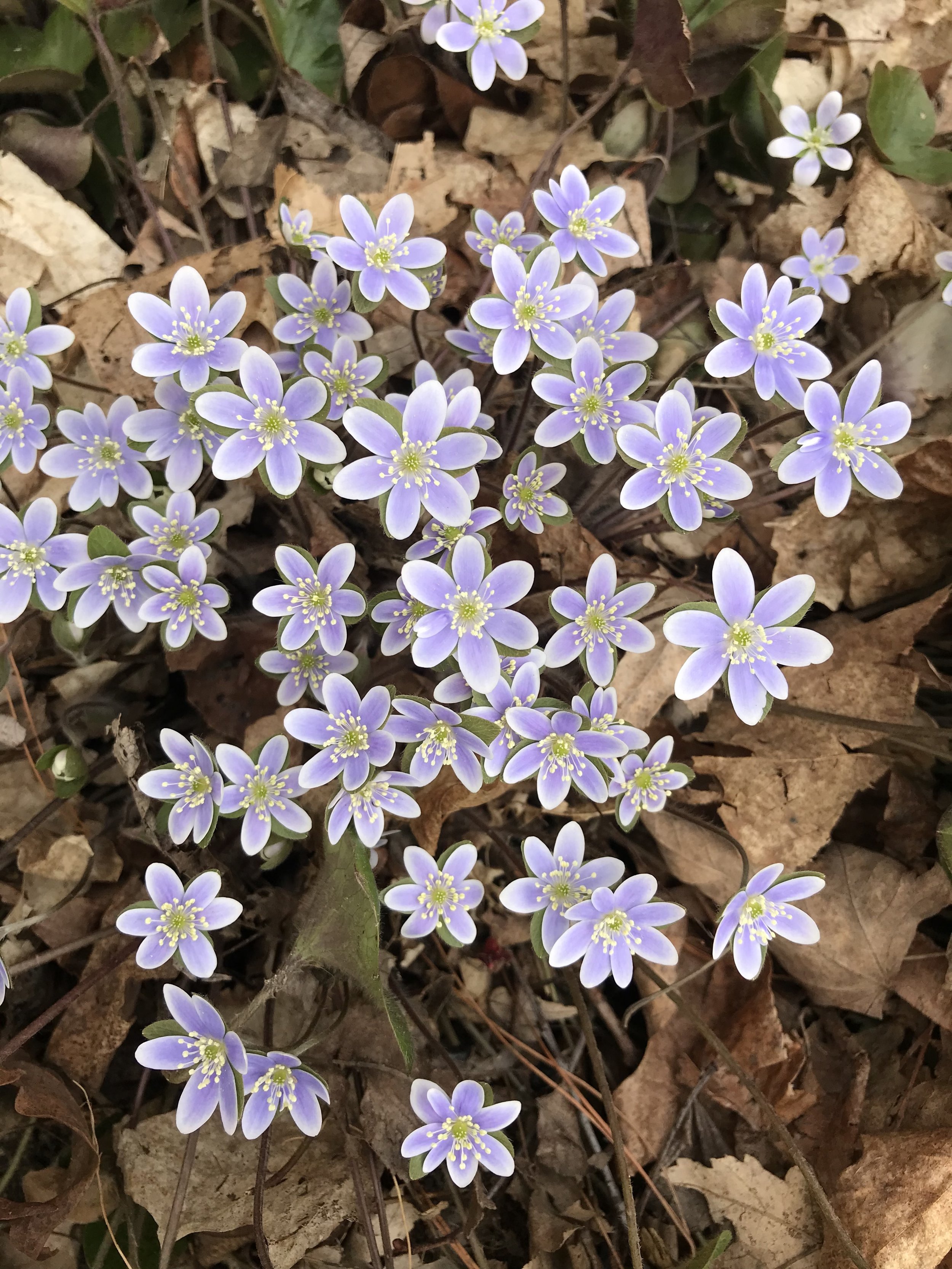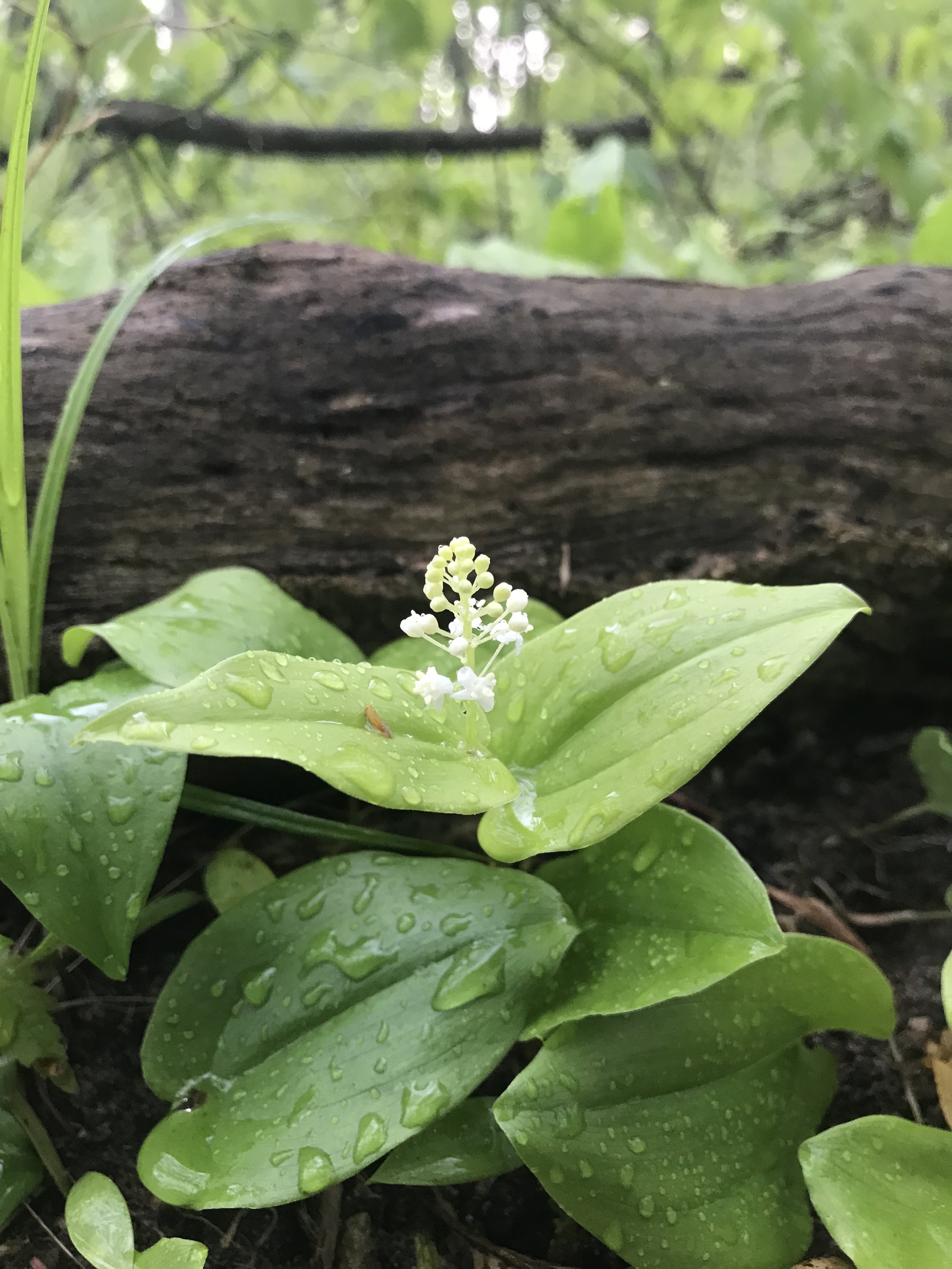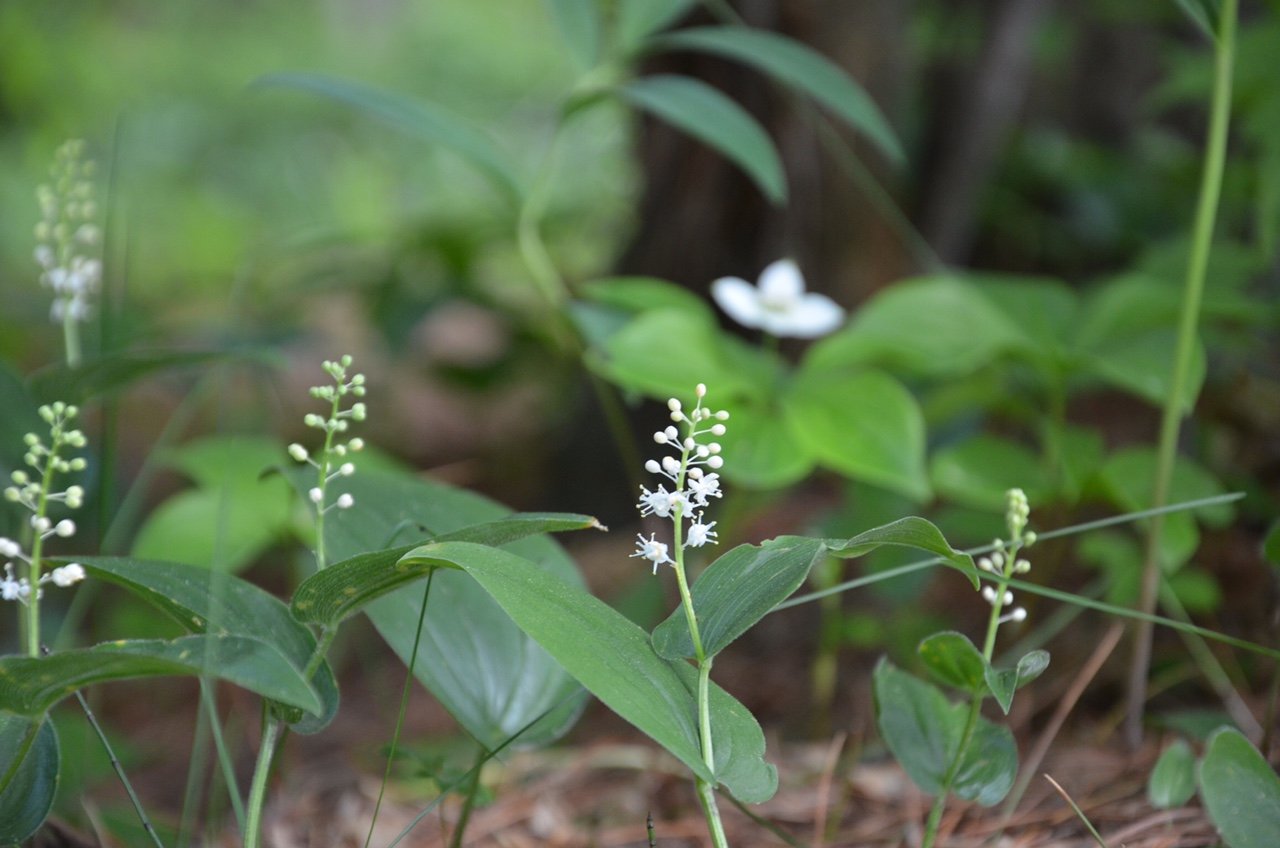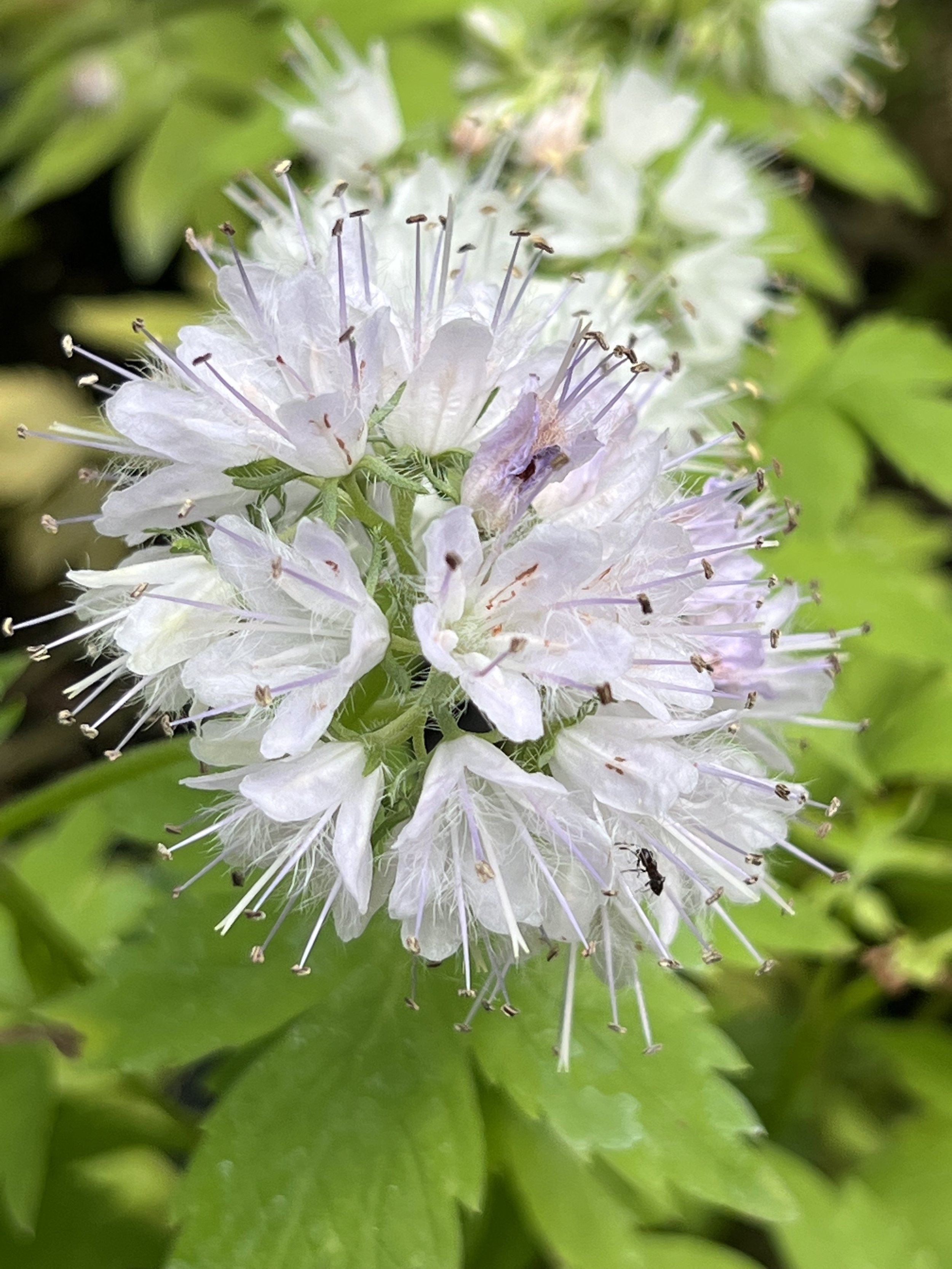Bunchberry (Cornus canadensis)
Bunchberry is in the Dogwood family (Cornus) and is actually a tiny shrub. The leaves are oval-round with pointed ends and they are deeply veined. The leaves surround what appears to be one flower. In actuality, the “petals” are four showy, white bracts that attract insects. In the center are around 30 small flowers with four petals each. Only a few are ripened at a time. Flowers have four stamens and a dark brown style in the center. Read ‘Info’ below to learn more about the fascinating world of bunchberry pollination.
Beetles, flies and bees are attracted to the flowers and carry out most of the pollination, although the pollen is tiny, so it can be carried by the wind. Once pollination is complete, small green berries begin to swell. Over time these round berries turn bright red. A patch of bunchberry in flower or in fruit is a lovely sight.
Bunchberry is found throughout Michigan but it is concentrated more in the north because this plant likes things cool and moist. The plant may be spread by small mammals and birds ingesting the berries, and they also grow by rhizome.
If you’d like to grow bunchberry, find the coolest part of the shade in your yard and keep decaying organic material nearby to replenish as it breaks down. In dry times, make sure to water it.
The biggest patches I have seen are along lakes (especially Great Lakes) and rivers in the northwoods.
Bunchberry (Cornus canadensis)
Michigan Flora reference page for state distribution: Bunchberry
height: 6-8 inches
bloom time: May-June
soil: cool, medium, rich
sun: partial, shade
plant spacing: 8”
flower: white/cream
life cycle: perennial
family: Cornus
Bunchberry is in the Dogwood family (Cornus) and is actually a tiny shrub. The leaves are oval-round with pointed ends and they are deeply veined. The leaves surround what appears to be one flower. In actuality, the “petals” are four showy, white bracts that attract insects. In the center are around 30 small flowers with four petals each. Only a few are ripened at a time. Flowers have four stamens and a dark brown style in the center. Read ‘Info’ below to learn more about the fascinating world of bunchberry pollination.
Beetles, flies and bees are attracted to the flowers and carry out most of the pollination, although the pollen is tiny, so it can be carried by the wind. Once pollination is complete, small green berries begin to swell. Over time these round berries turn bright red. A patch of bunchberry in flower or in fruit is a lovely sight.
Bunchberry is found throughout Michigan but it is concentrated more in the north because this plant likes things cool and moist. The plant may be spread by small mammals and birds ingesting the berries, and they also grow by rhizome.
If you’d like to grow bunchberry, find the coolest part of the shade in your yard and keep decaying organic material nearby to replenish as it breaks down. In dry times, make sure to water it.
The biggest patches I have seen are along lakes (especially Great Lakes) and rivers in the northwoods.
Bunchberry (Cornus canadensis)
Michigan Flora reference page for state distribution: Bunchberry
height: 6-8 inches
bloom time: May-June
soil: cool, medium, rich
sun: partial, shade
plant spacing: 8”
flower: white/cream
life cycle: perennial
family: Cornus
Bunchberry is in the Dogwood family (Cornus) and is actually a tiny shrub. The leaves are oval-round with pointed ends and they are deeply veined. The leaves surround what appears to be one flower. In actuality, the “petals” are four showy, white bracts that attract insects. In the center are around 30 small flowers with four petals each. Only a few are ripened at a time. Flowers have four stamens and a dark brown style in the center. Read ‘Info’ below to learn more about the fascinating world of bunchberry pollination.
Beetles, flies and bees are attracted to the flowers and carry out most of the pollination, although the pollen is tiny, so it can be carried by the wind. Once pollination is complete, small green berries begin to swell. Over time these round berries turn bright red. A patch of bunchberry in flower or in fruit is a lovely sight.
Bunchberry is found throughout Michigan but it is concentrated more in the north because this plant likes things cool and moist. The plant may be spread by small mammals and birds ingesting the berries, and they also grow by rhizome.
If you’d like to grow bunchberry, find the coolest part of the shade in your yard and keep decaying organic material nearby to replenish as it breaks down. In dry times, make sure to water it.
The biggest patches I have seen are along lakes (especially Great Lakes) and rivers in the northwoods.
Bunchberry (Cornus canadensis)
Michigan Flora reference page for state distribution: Bunchberry
height: 6-8 inches
bloom time: May-June
soil: cool, medium, rich
sun: partial, shade
plant spacing: 8”
flower: white/cream
life cycle: perennial
family: Cornus
(From “In Defense of Plants” podcast episode 350; the research of Dr. Joan Edwards on Isle Royale): Bunchberry has flowers that explode! Bunchberry “flowers” are actually about 30 small flowers in the center surrounded by showy white bracts. Plants mature a few of the tiny flowers at a time. Viewing the flowers under a lens, the stamens are bent (actually hinged) inside the four petals. One petal has a trigger hair. If an insect steps on the trigger, it explodes and catapults the pollen. The insect that is over the flower as it explodes gets its abdomen covered in pollen. The pollen is on the small side and can be carried by pollinators, but also by wind. One of the benefits of exploding flowers is the reduction of pollenivory (feeding on pollen). If insects don’t visit, the flowers explode on their own. But, there is more pollination if insects especially large ones, visit.























































